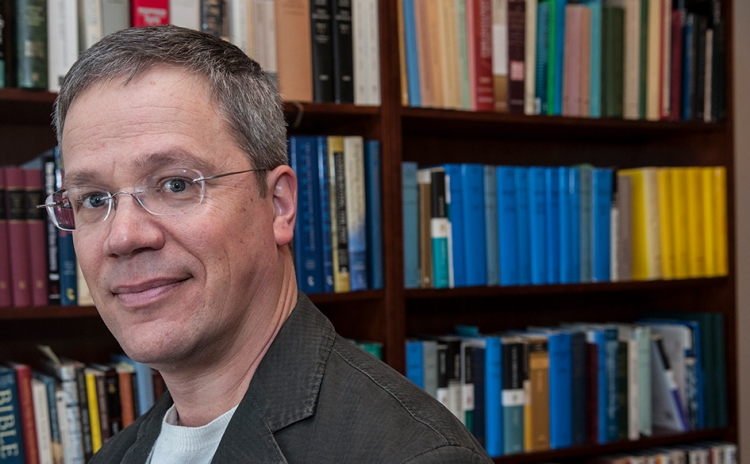
By
Associate Professor of Theology David Vanderhooft has won the 2012 G. Ernest Wright Award by American Schools of Oriental Research for his co-authored book, The Yehud Stamp Impressions: A Corpus of Inscribed Impressions from the Persian and Hellenistic Periods in Judah.
The honor — named for the late G. Ernest Wright, an influential Old Testament and ancient Near Eastern archaeology scholar at the Harvard Divinity School and curator of Harvard’s Semitic Museum — is given to the editor/author of the most substantial volume(s) dealing with archaeological material, excavation reports and material culture from the ancient Near East and eastern Mediterranean. Vanderhooft and co-author Oded Lipschits of Tel Aviv University were presented with the award at the ASOR annual meeting in Chicago.
The Yehud Stamp Impressions is the product of years of research and analysis and displays the first comprehensive examination of these important artifacts from ancient Israel in about 40 years. The systematic study by Lipschits and Vanderhooft presents a comprehensive catalogue, classification, and analysis of all published and unpublished Yehud stamp impressions, with digital photographs and complete archaeological and publication data for each impression.
ASOR described the book as an “invaluable, insightful, and exhaustive resource [that] provides a new historical typology for the development of the impressions and casts new light on the related fields of stratigraphy, paleography, administration, historical geography, and the Persian-period economy.” The authors, according to ASOR, “have produced a very substantial volume, dealing with both archaeological material and material culture from the ancient Near Eastern and eastern Mediterranean world.”
“To receive the G. Ernest Wright award from ASOR was a great surprise and honor, and we are both delighted,” said Vanderhooft. “The book contains the kind of detailed scholarship on the ancient world that ASOR has done so much to promote, so for peers in our field to acknowledge the book is incredibly important to us.
“It was a tremendous pleasure to work with my colleague, Oded Lipschits, on this book, and to offer a framework for understanding the society and economy of ancient Judah in the Persian and early Hellenistic periods. Those are the periods when scholars agree that the books of the Hebrew Bible largely assumed the shape in which we know them. Yet answers to fundamental questions about the society in which the texts were collated, copied, and in some cases composed, remain elusive: What was the extent of the province? How was it governed? How big was Jerusalem? What was the role of the temple in the society and the economy?
“I wouldn’t say we’ve solved these questions, but through careful study of the jar stamp impressions, we’ve clarified the parameters of discourse. We’ve shown when and why Aramaic became the language of administration, how commodities stored in the jars circulated in the province, and how the governing and tax structures changed over time. We hope our study of the dating of Aramaic inscriptions and the stratigraphy of sites that yielded the stamped jars will be of help to other scholars.”
Vanderhooft joined Boston College in 1996 after earning his doctorate in Near Eastern Languages and Civilizations from Harvard University. His research focuses on the Hebrew Scriptures, ancient Israel’s literature and the relationship between Israel and the ancient empires of Assyria and Babylonia. He teaches courses on the Hebrew Bible.



